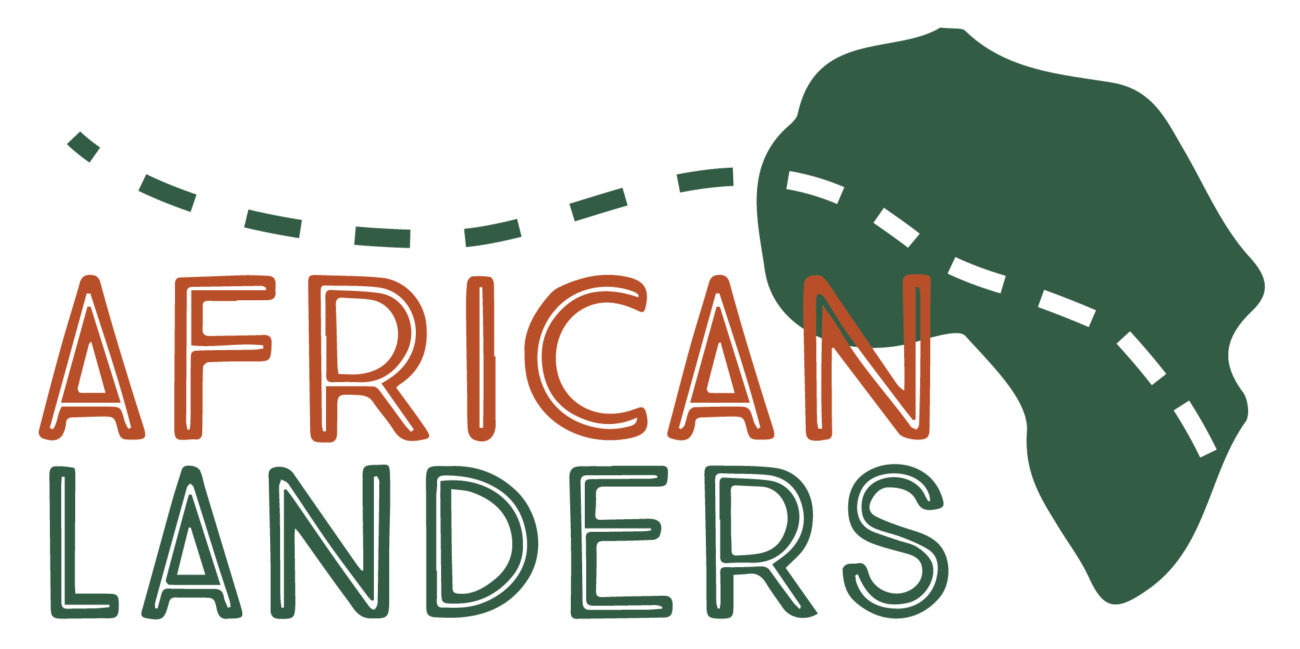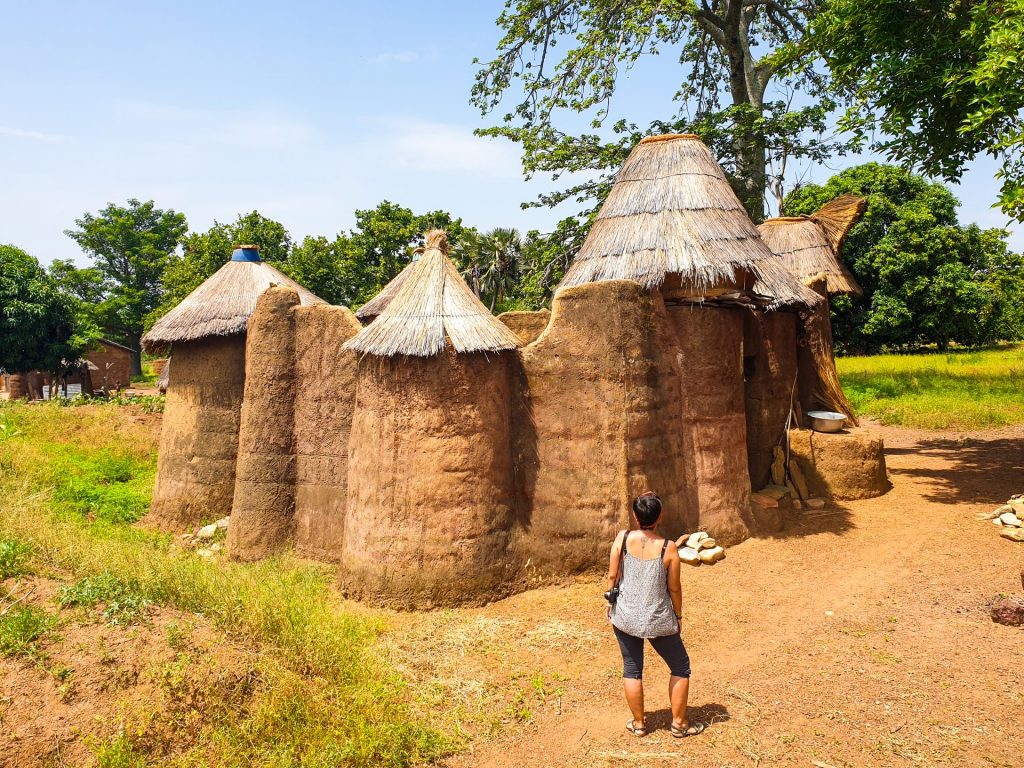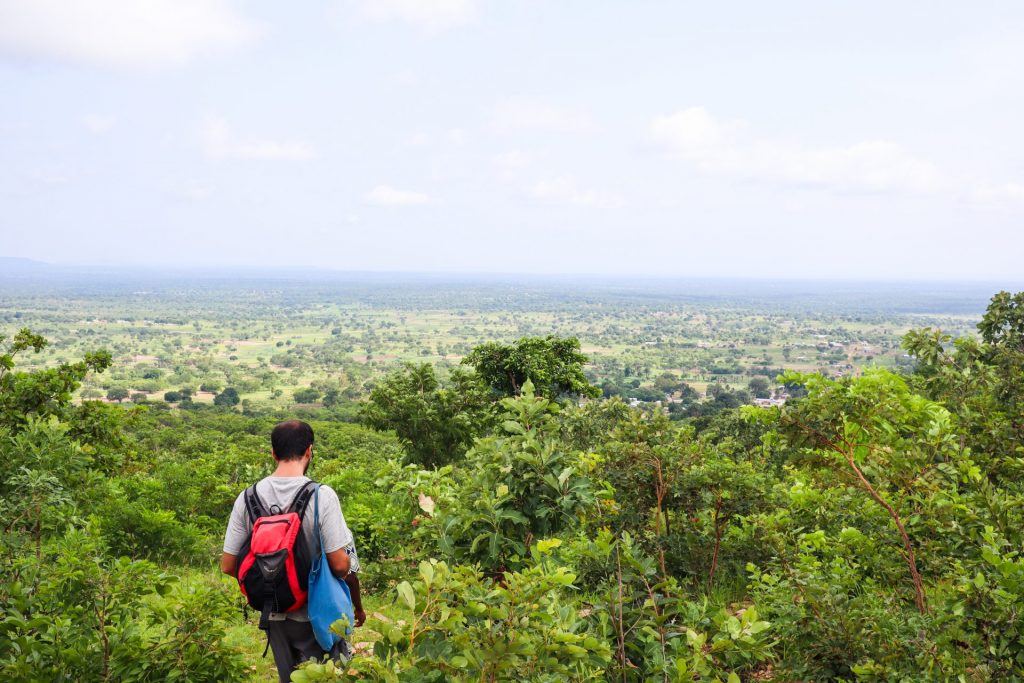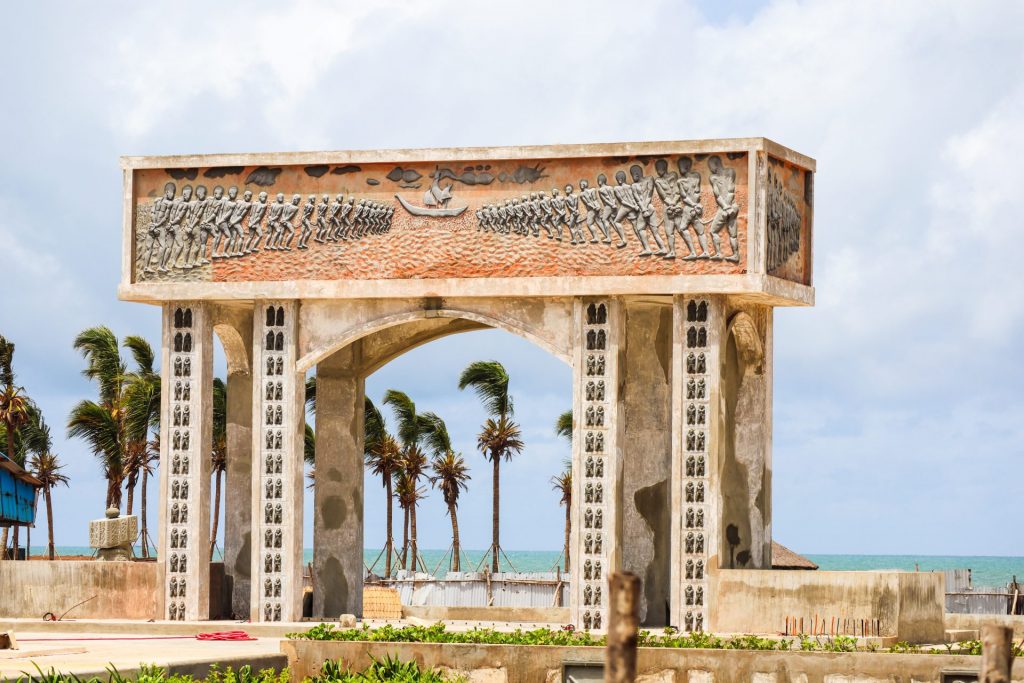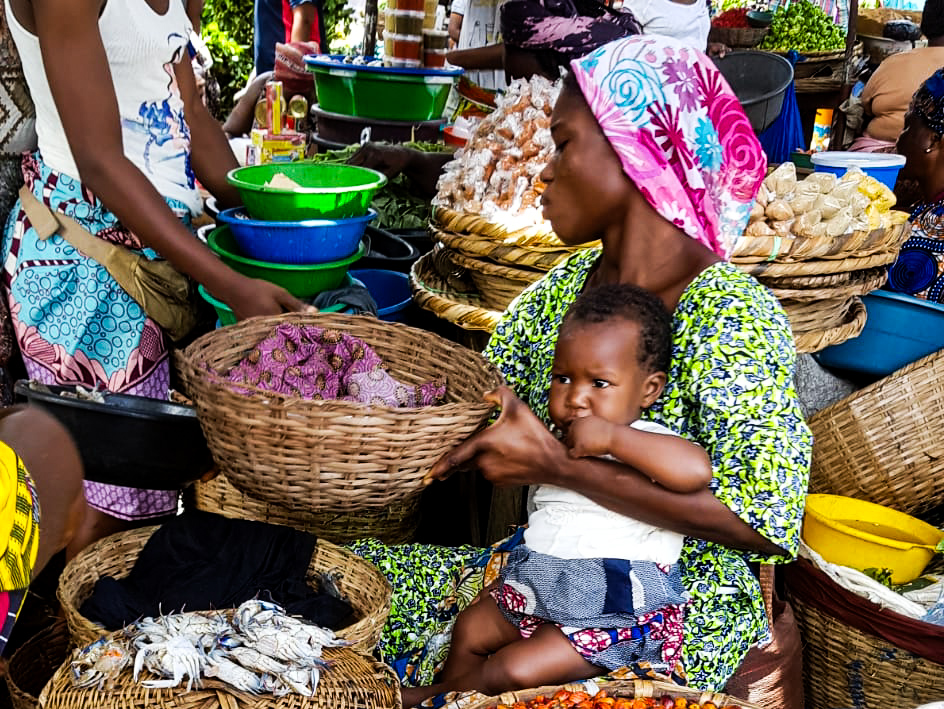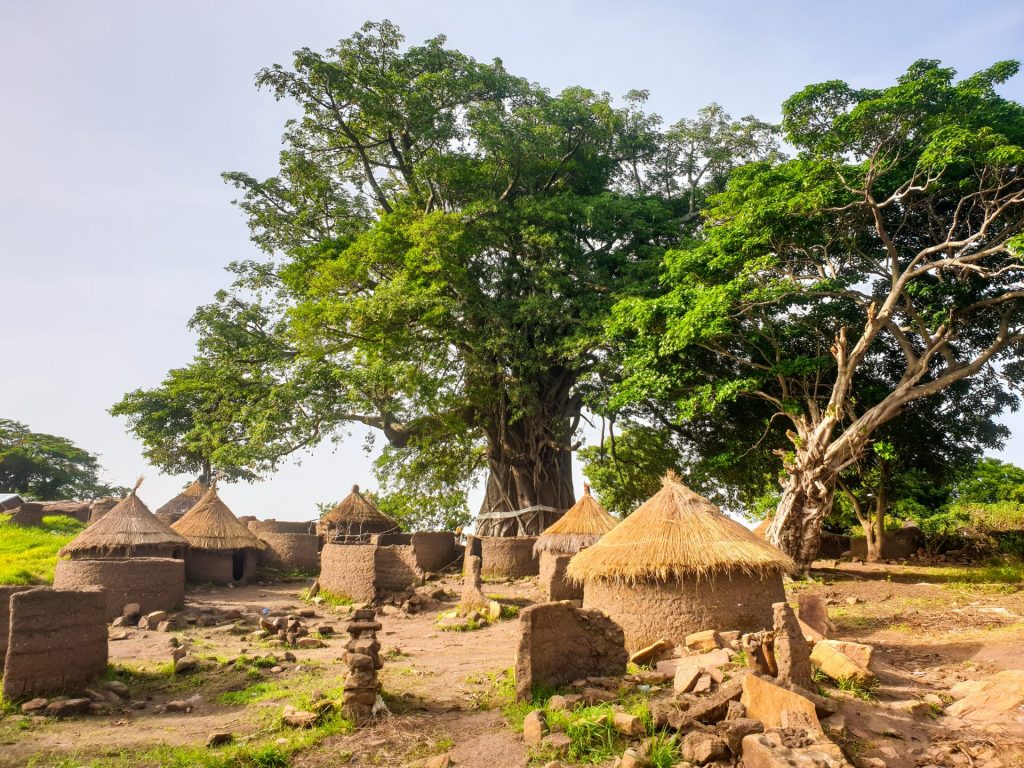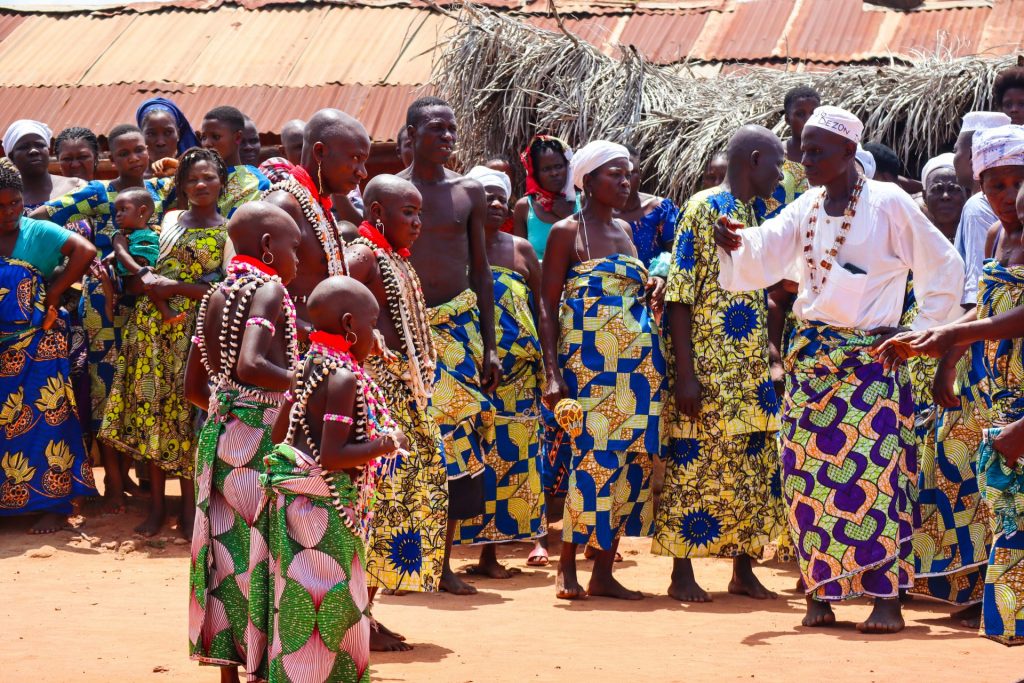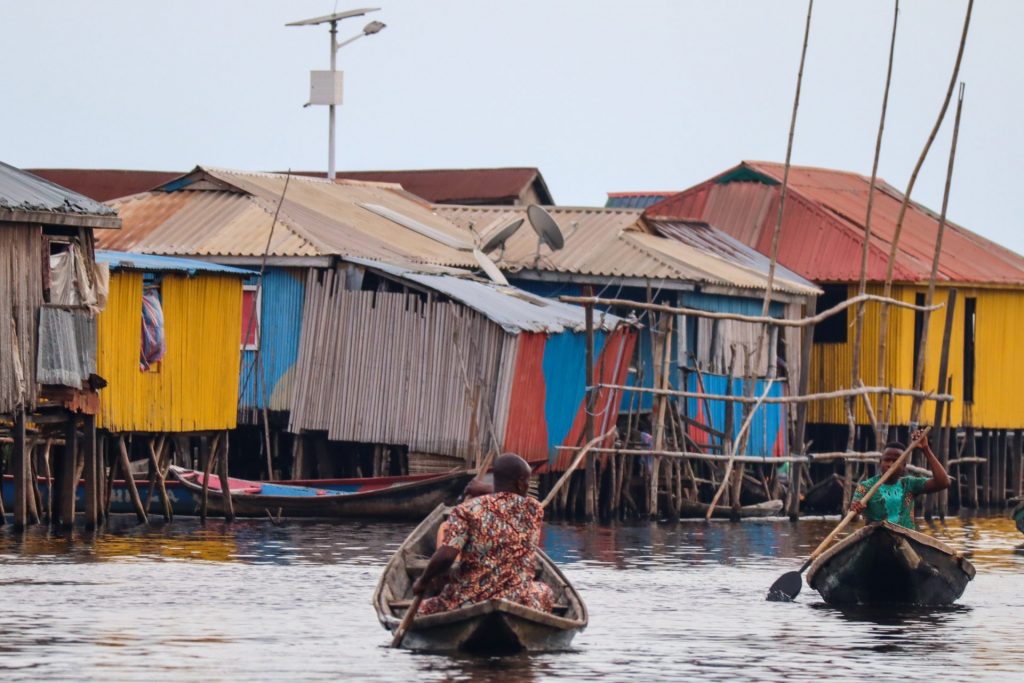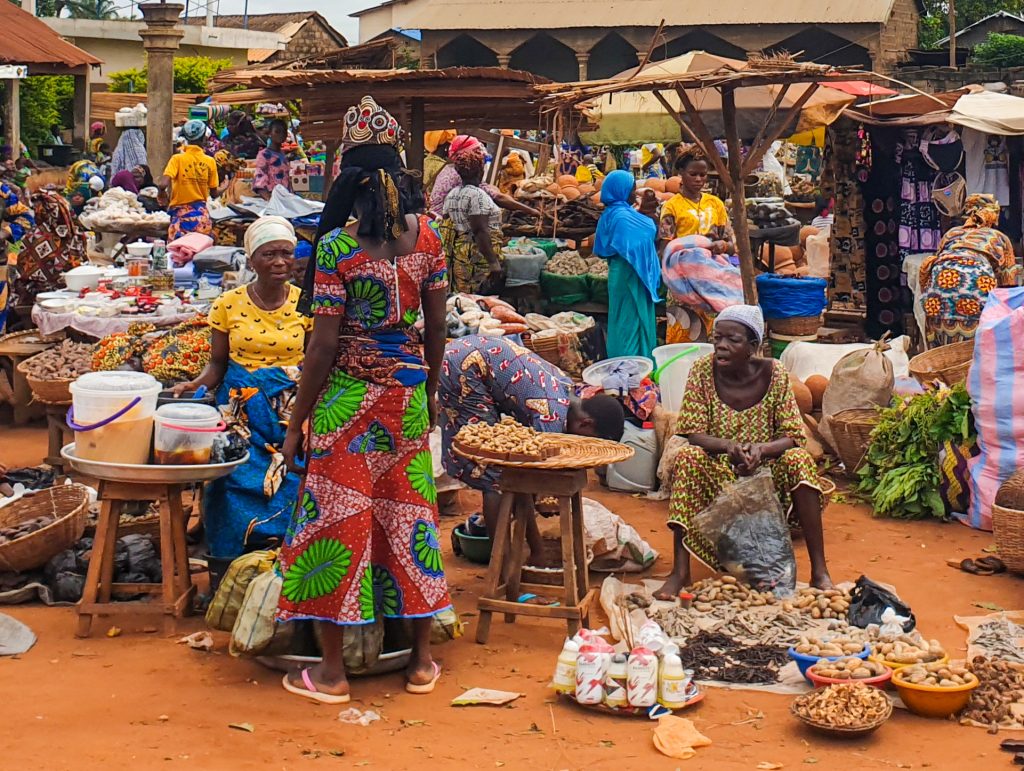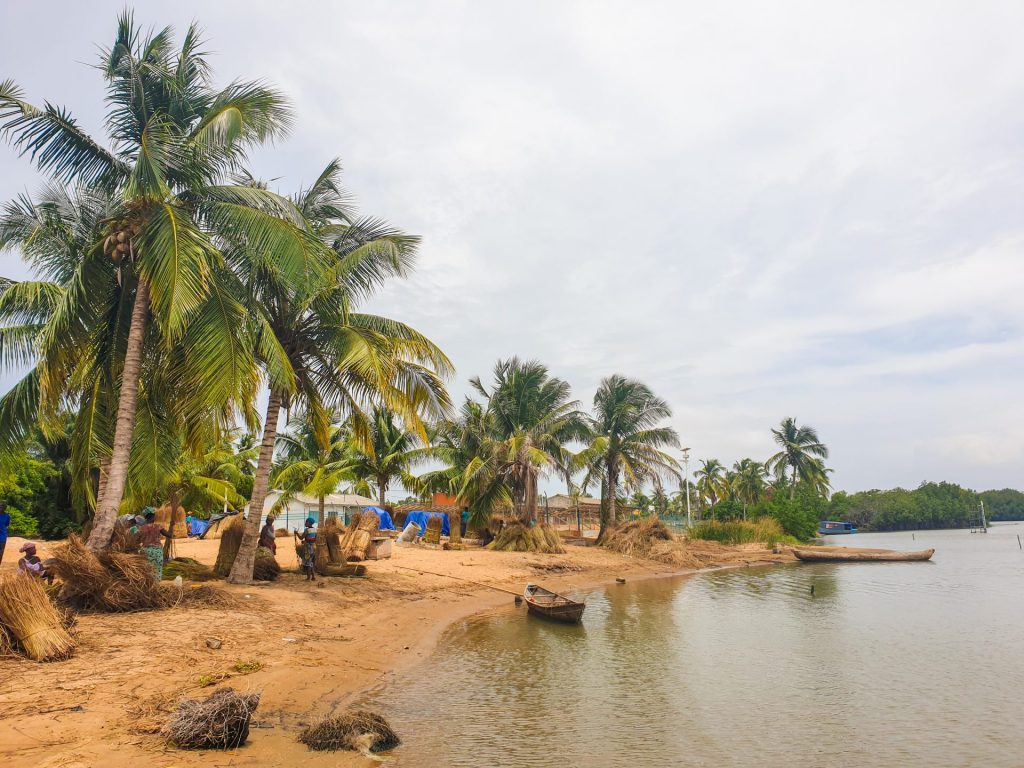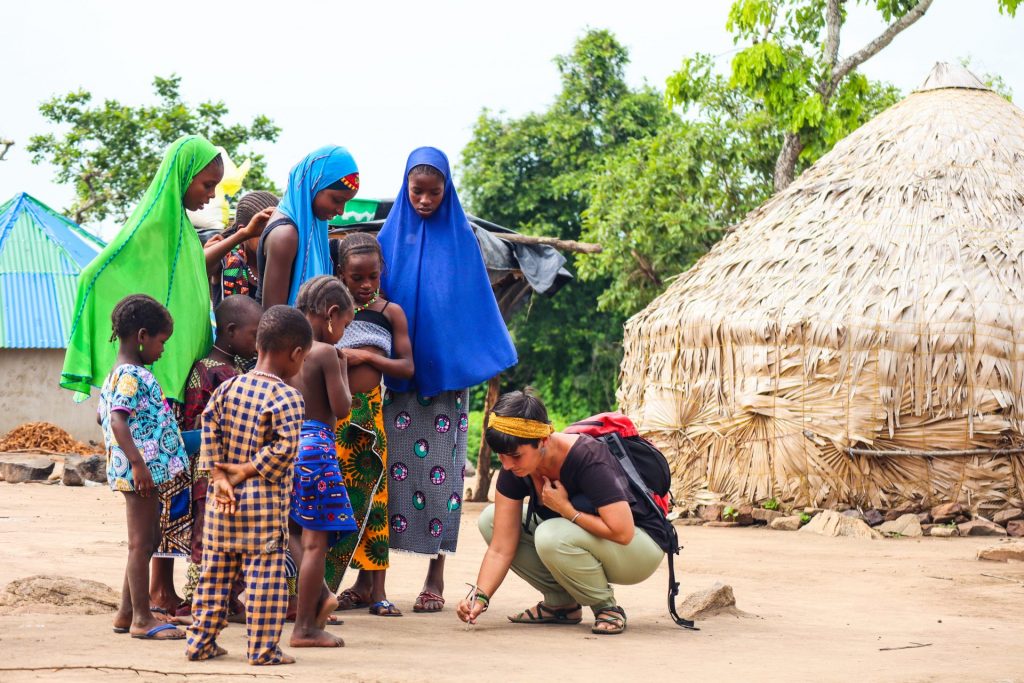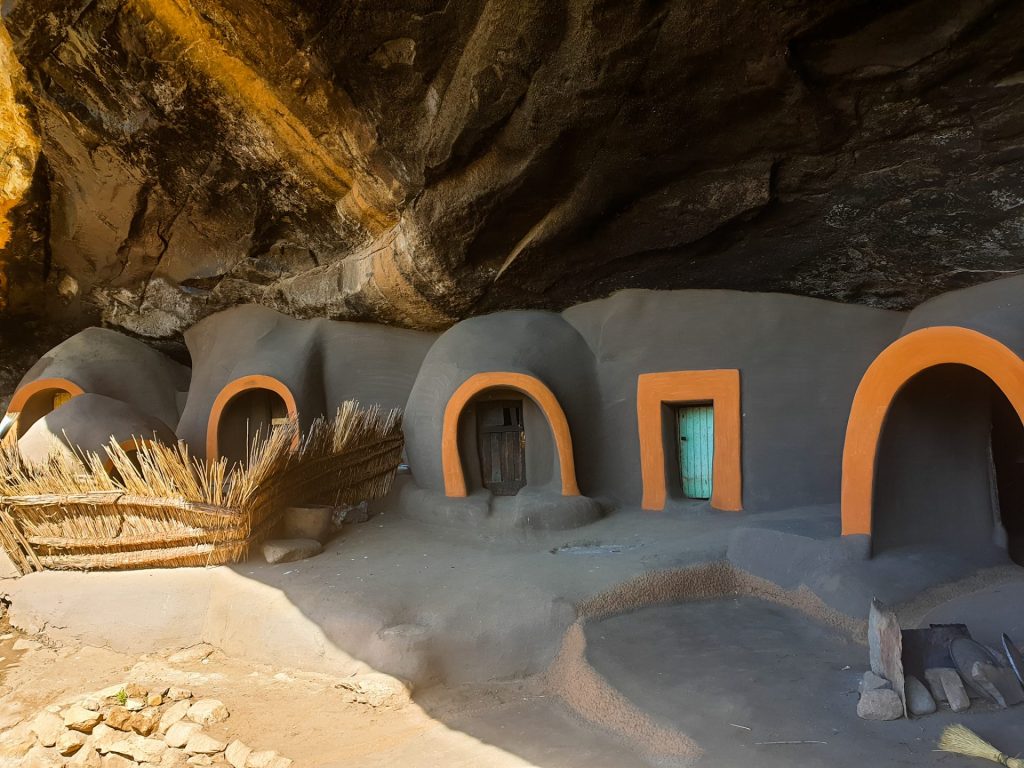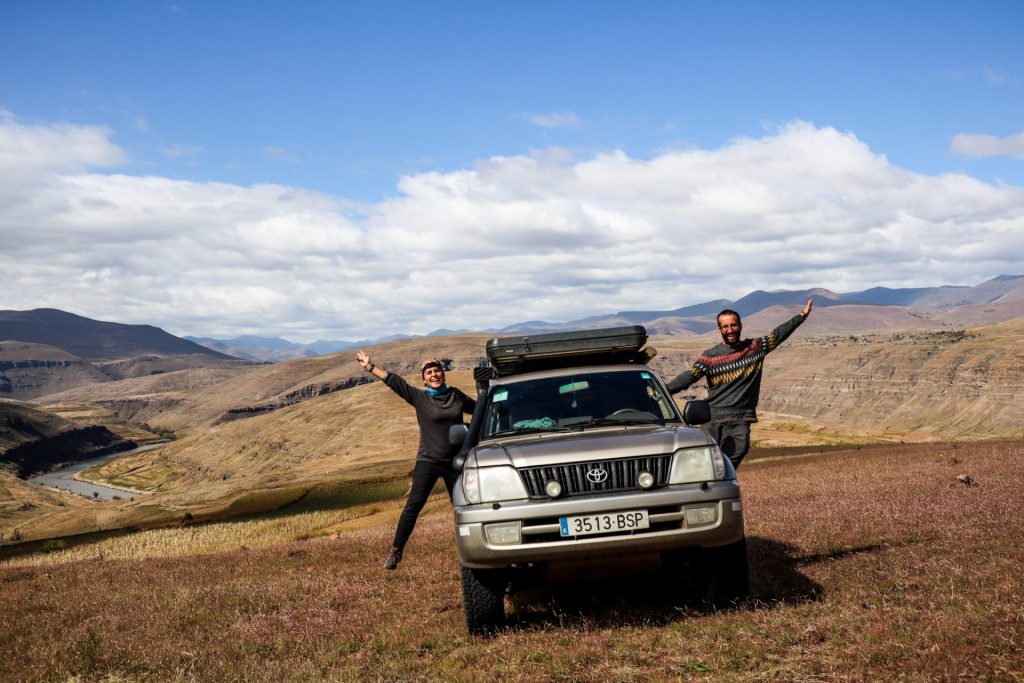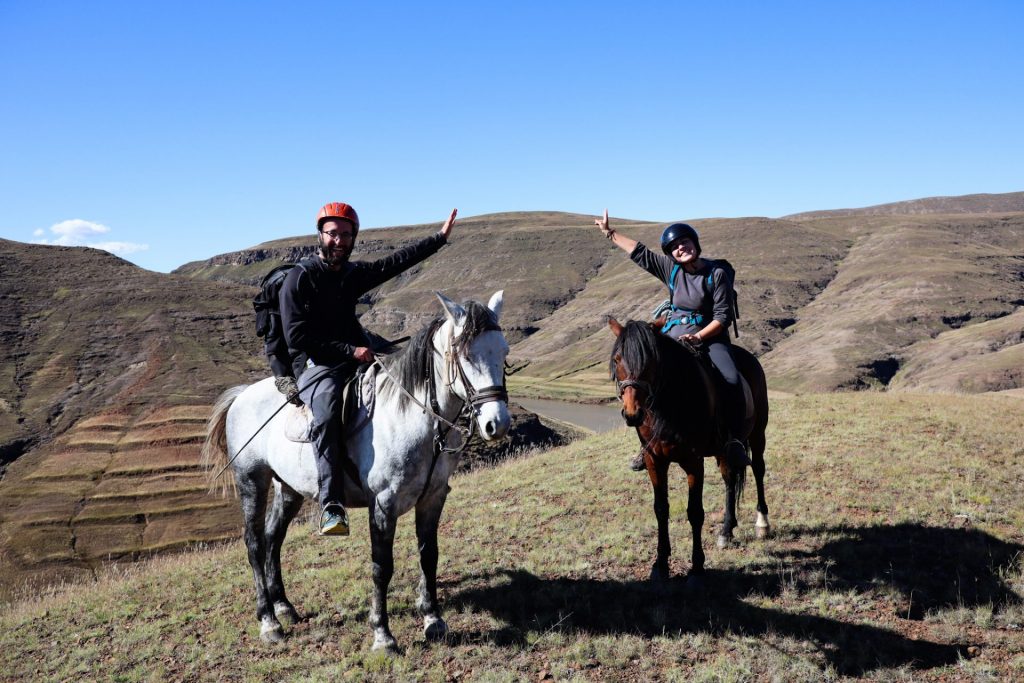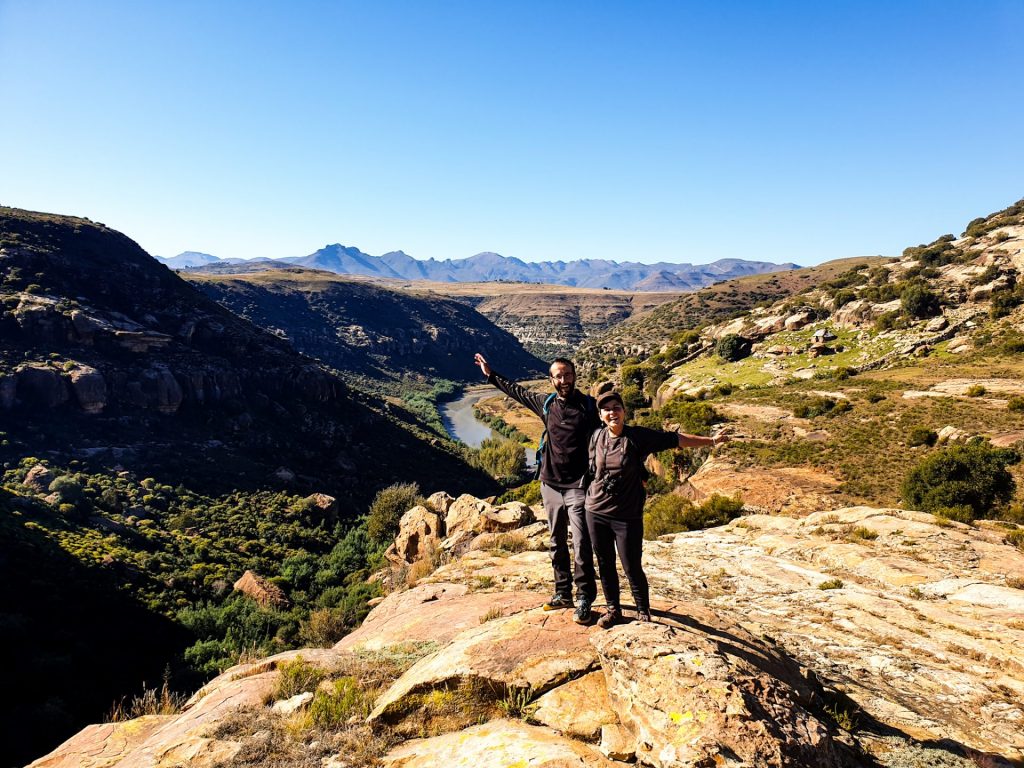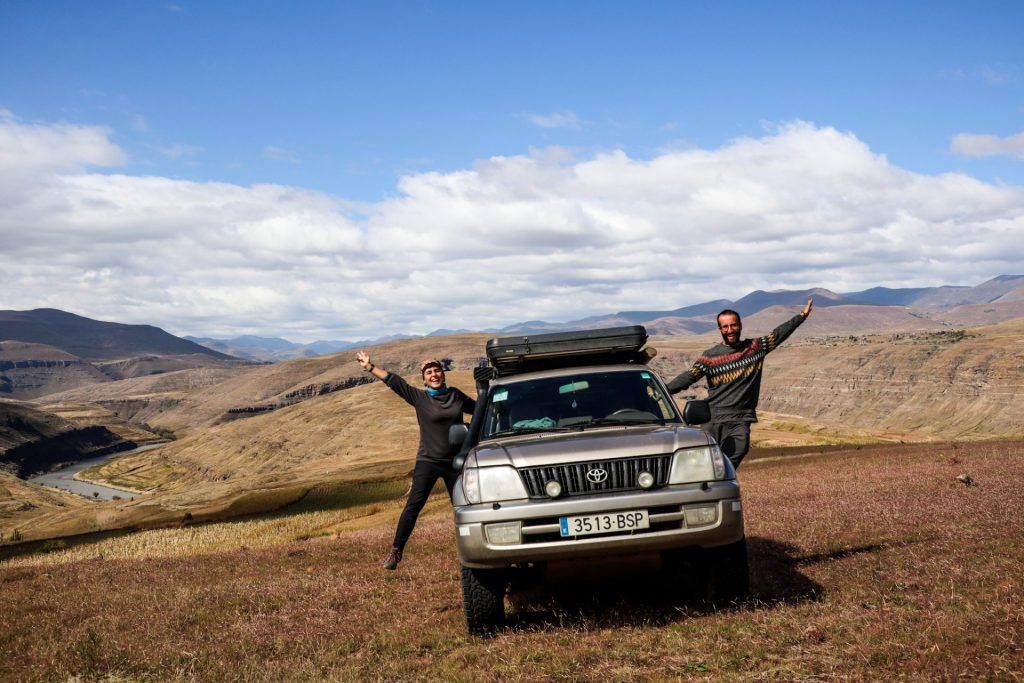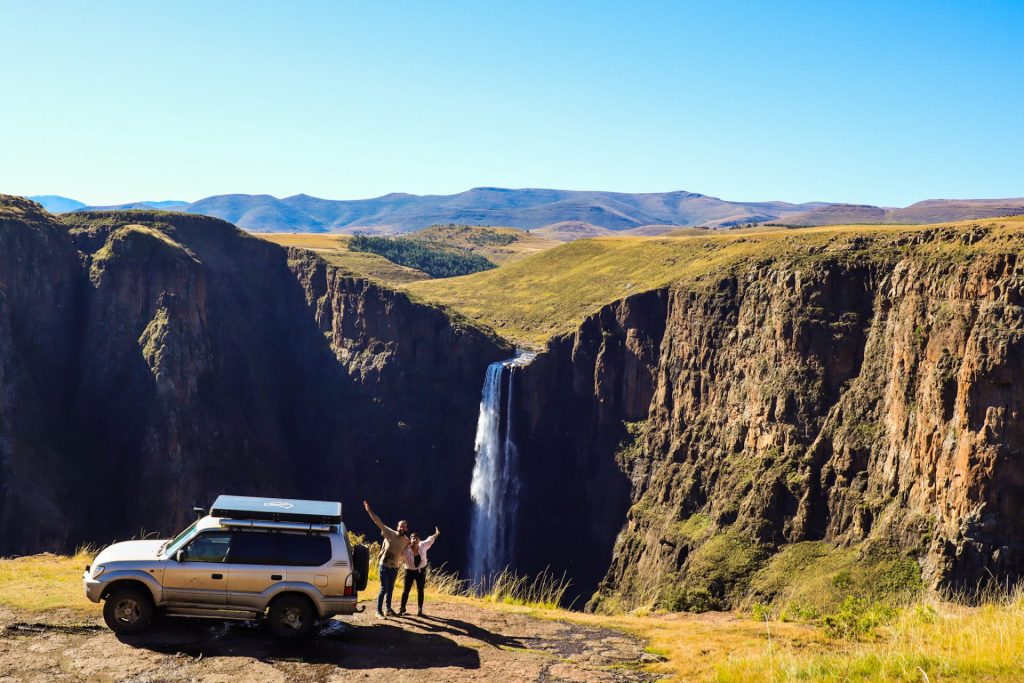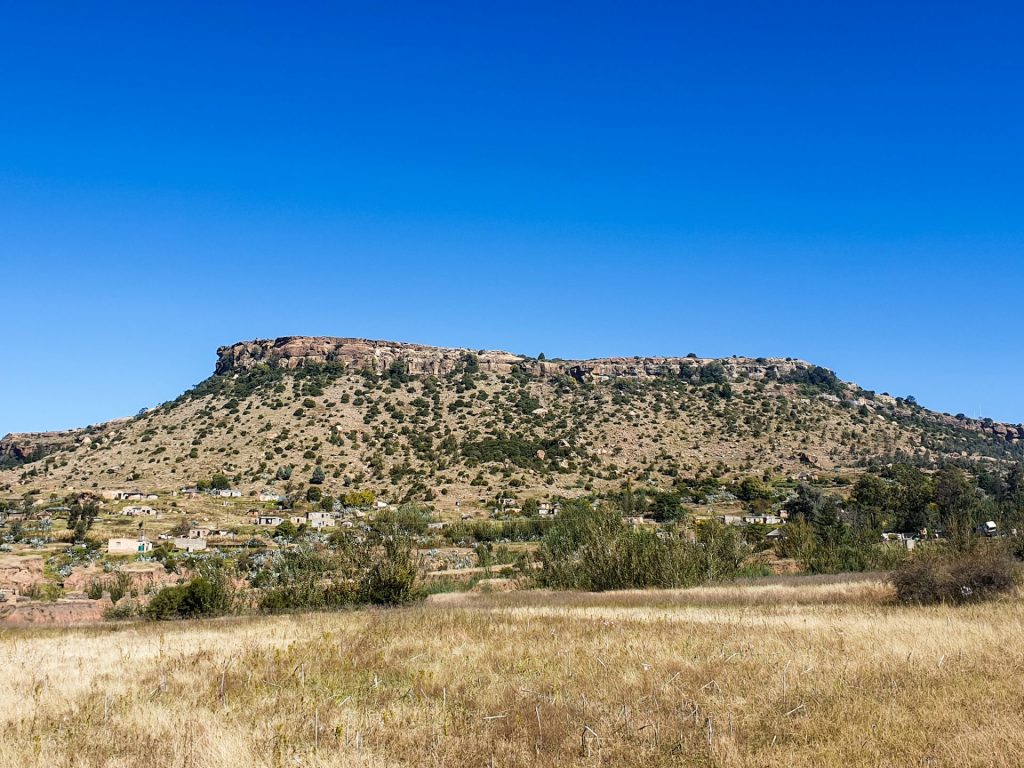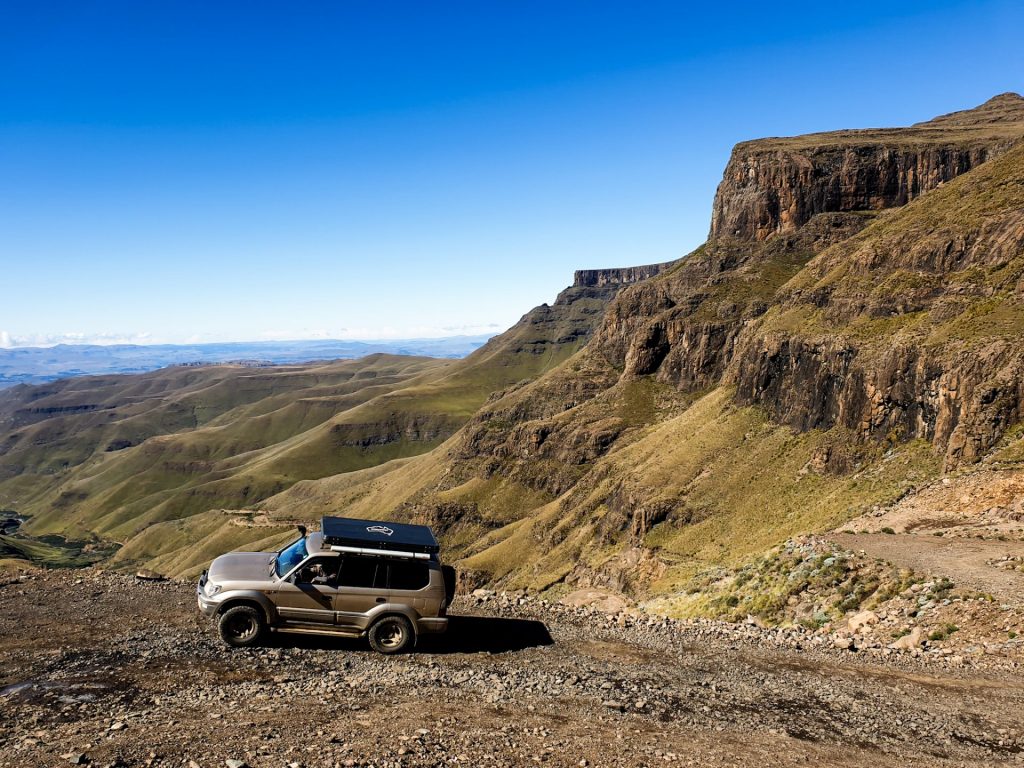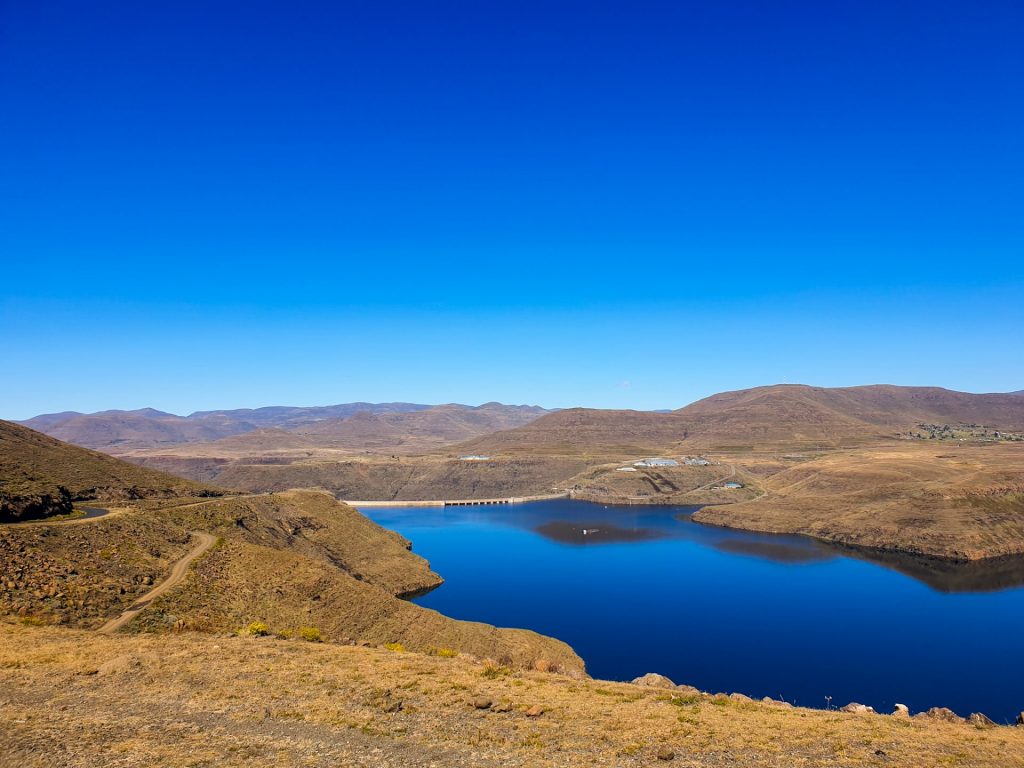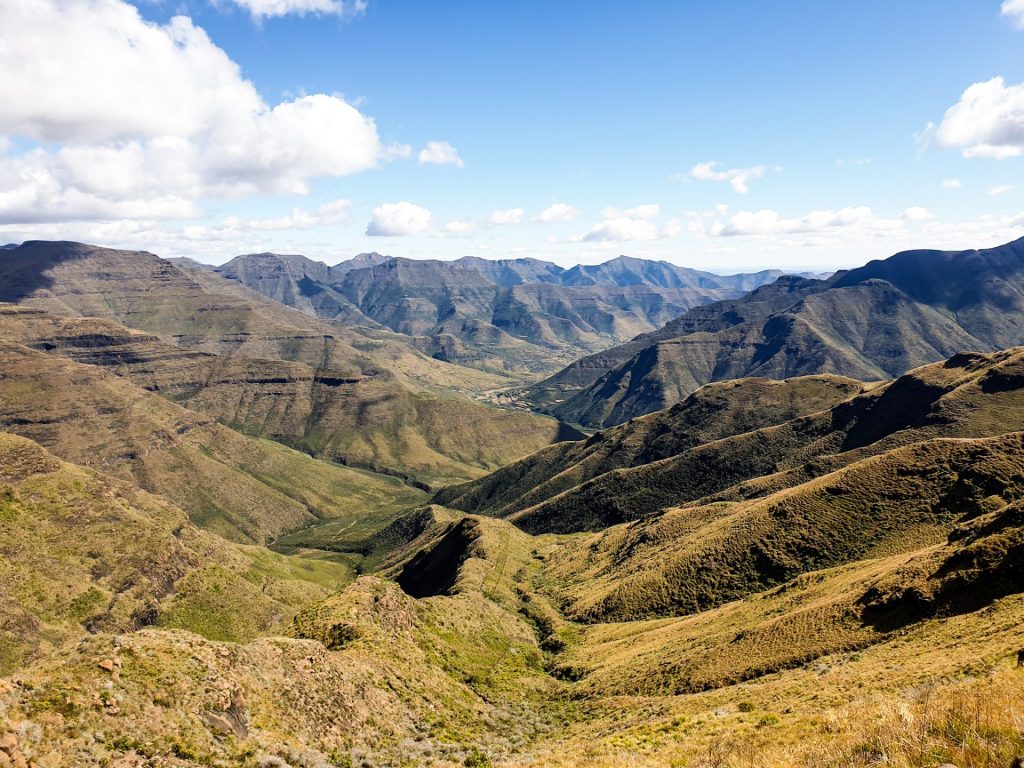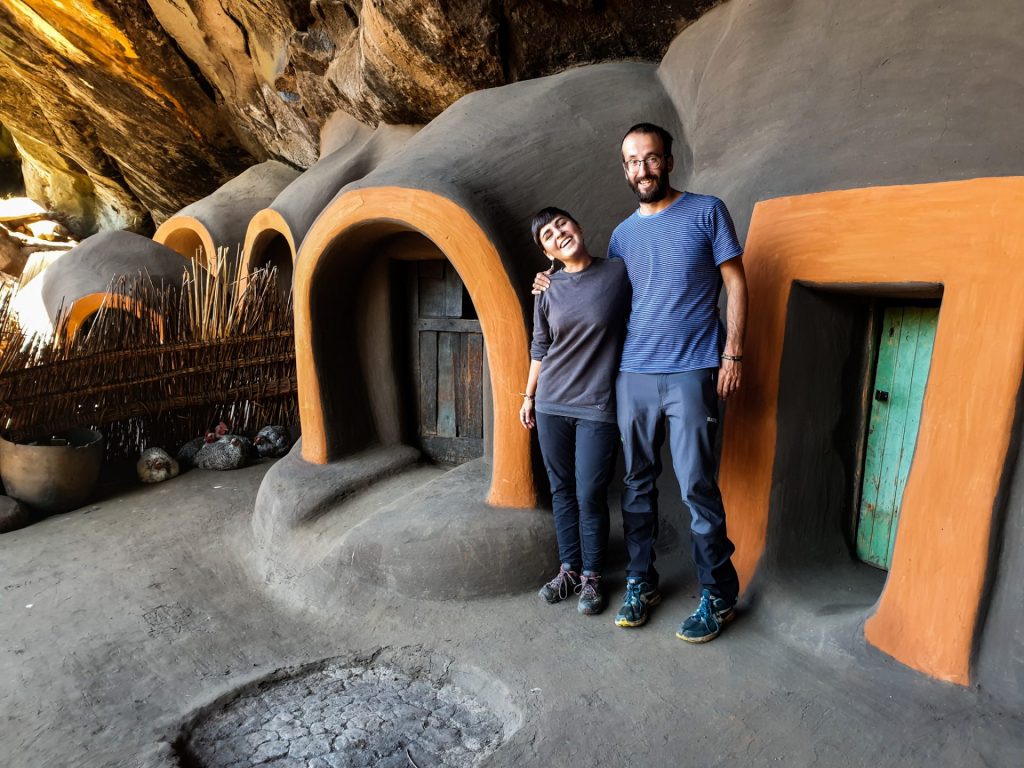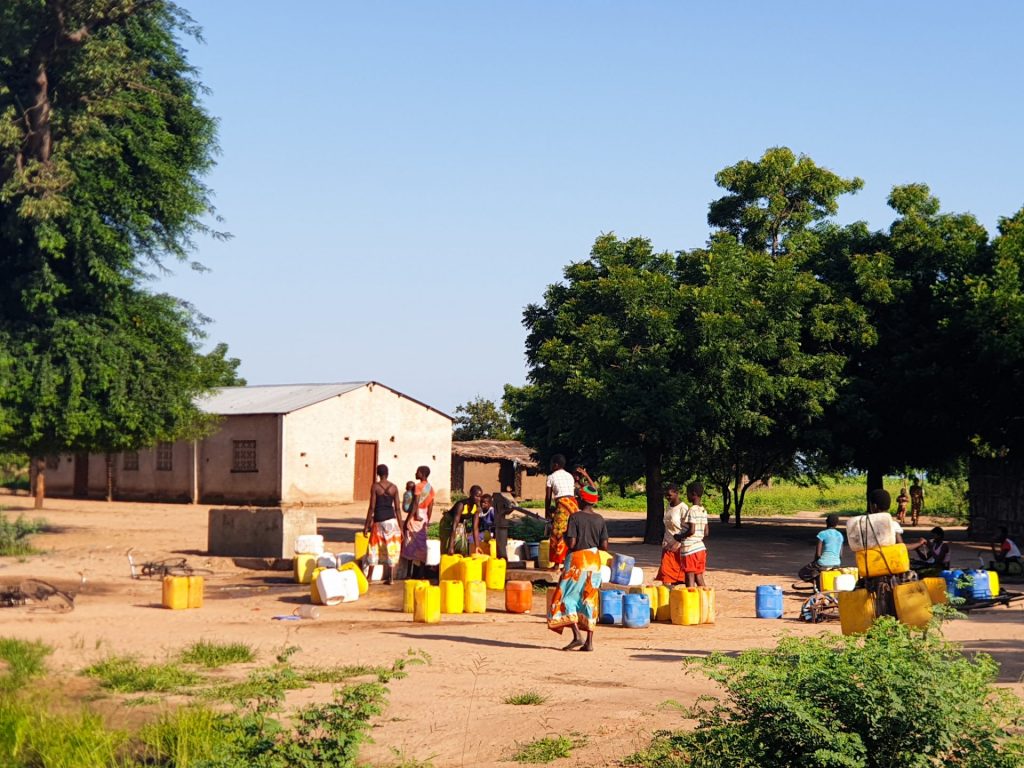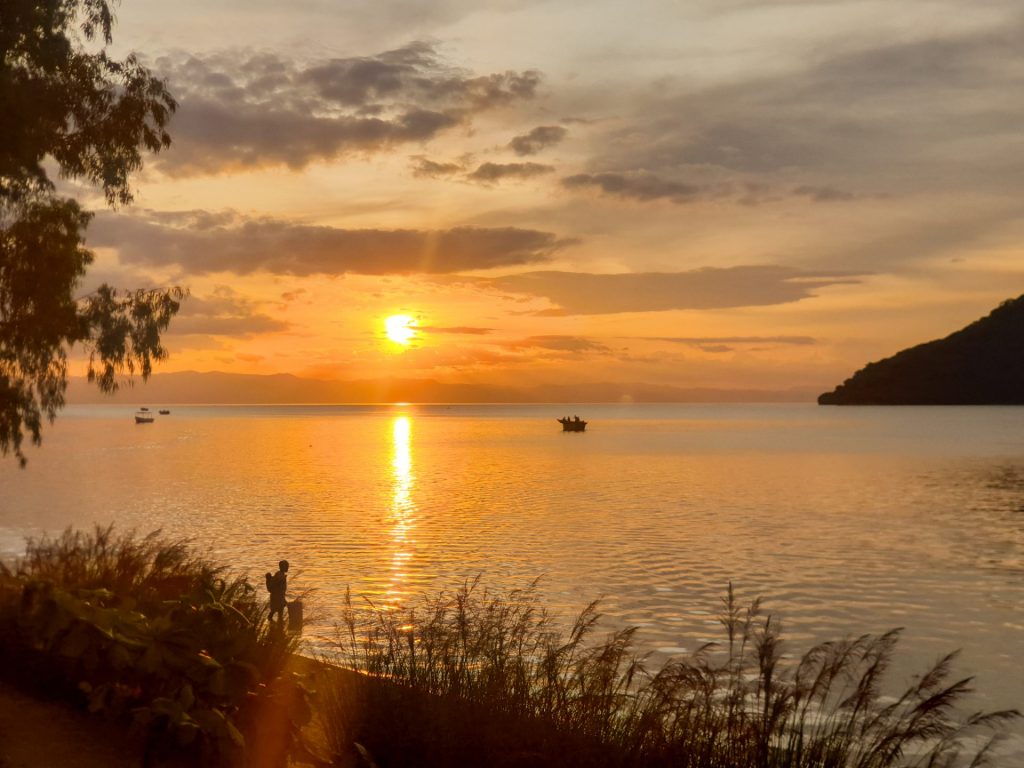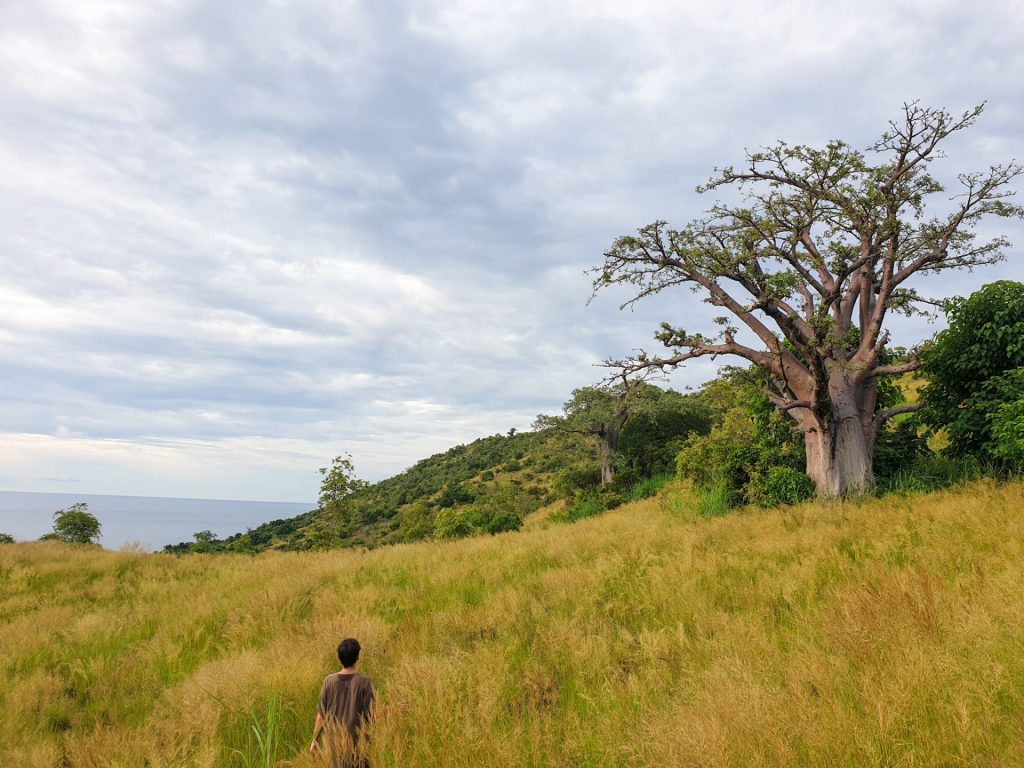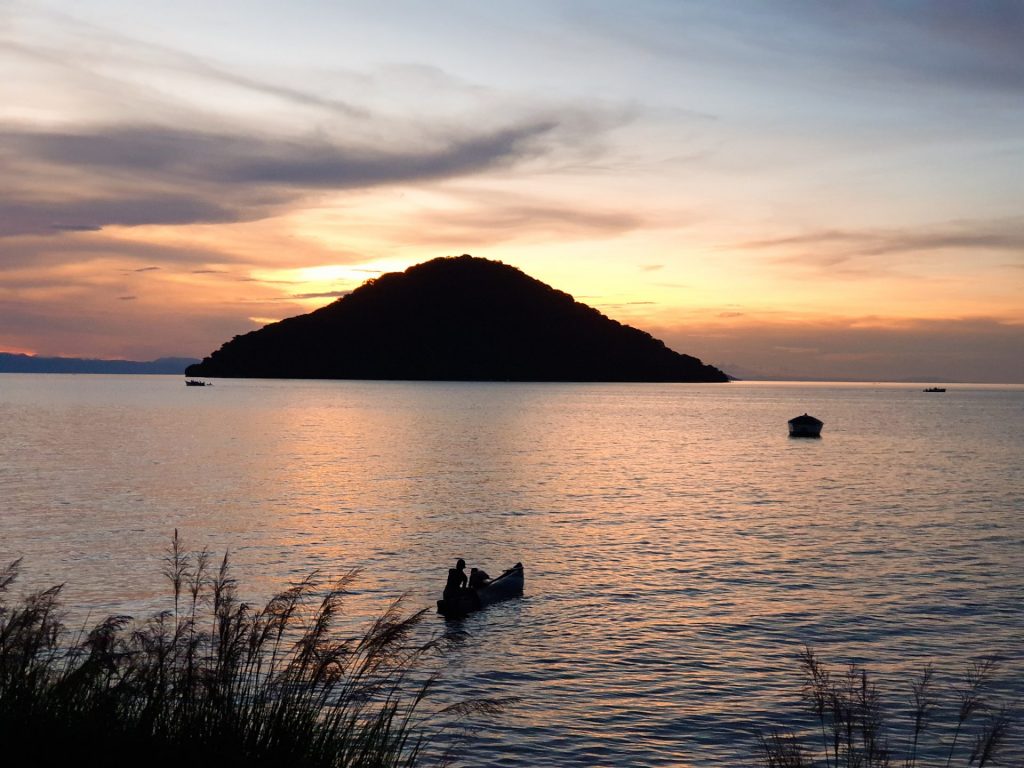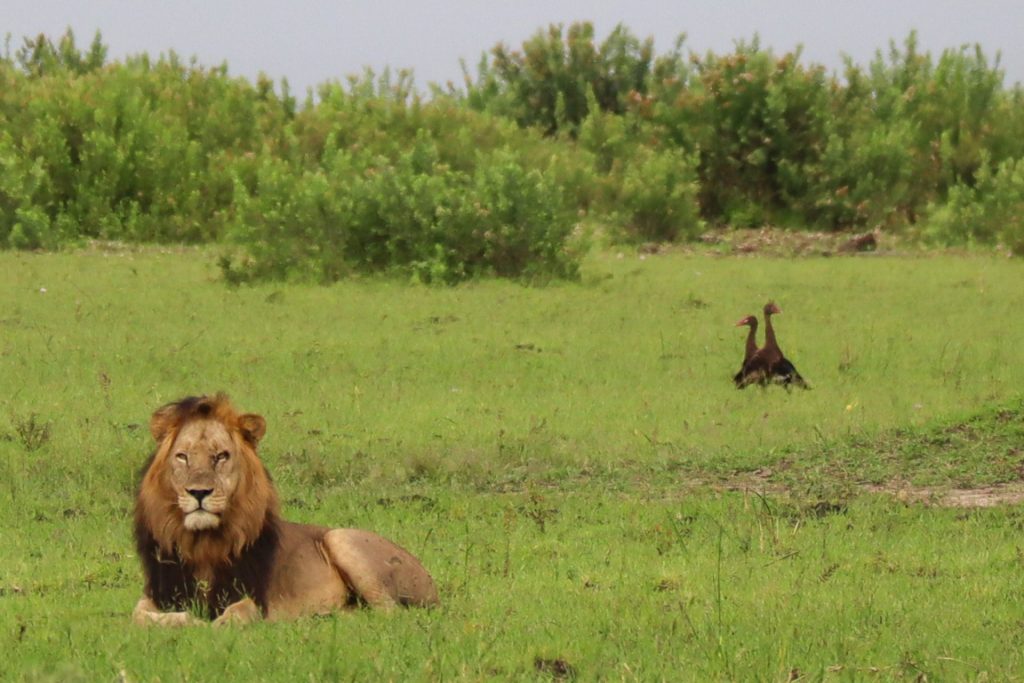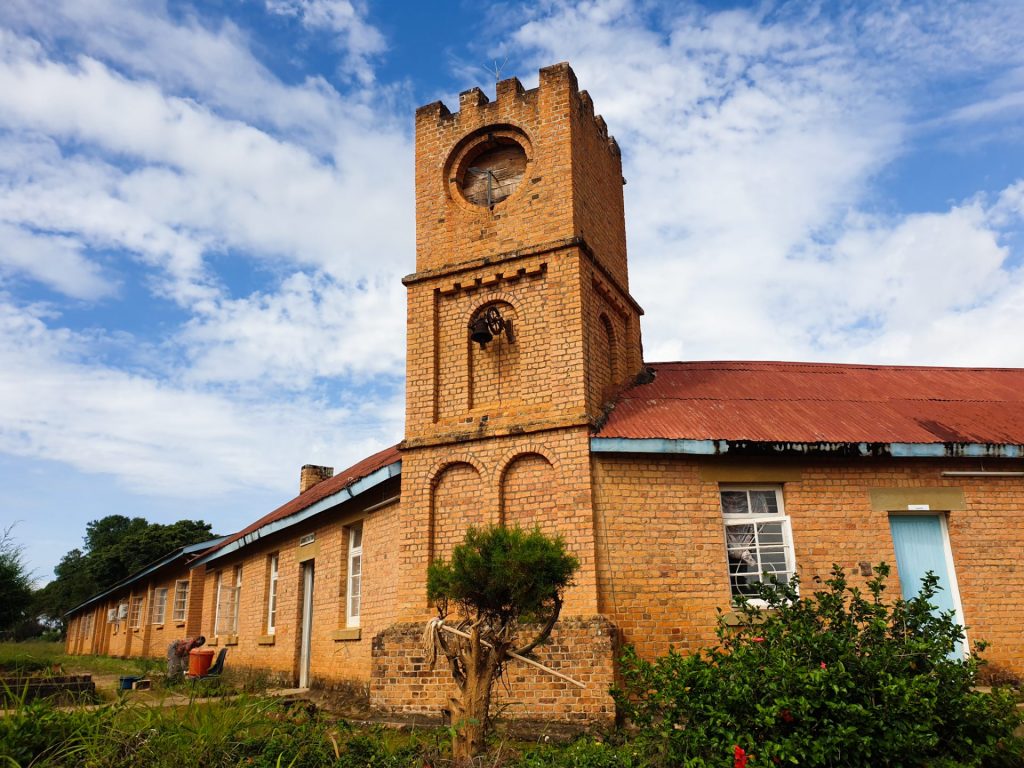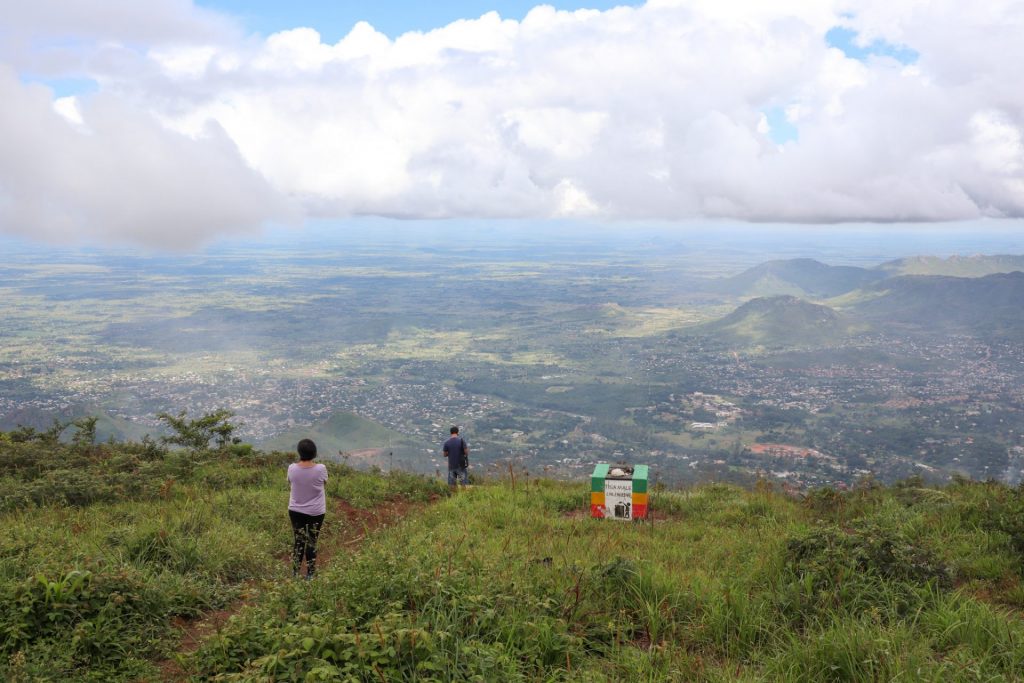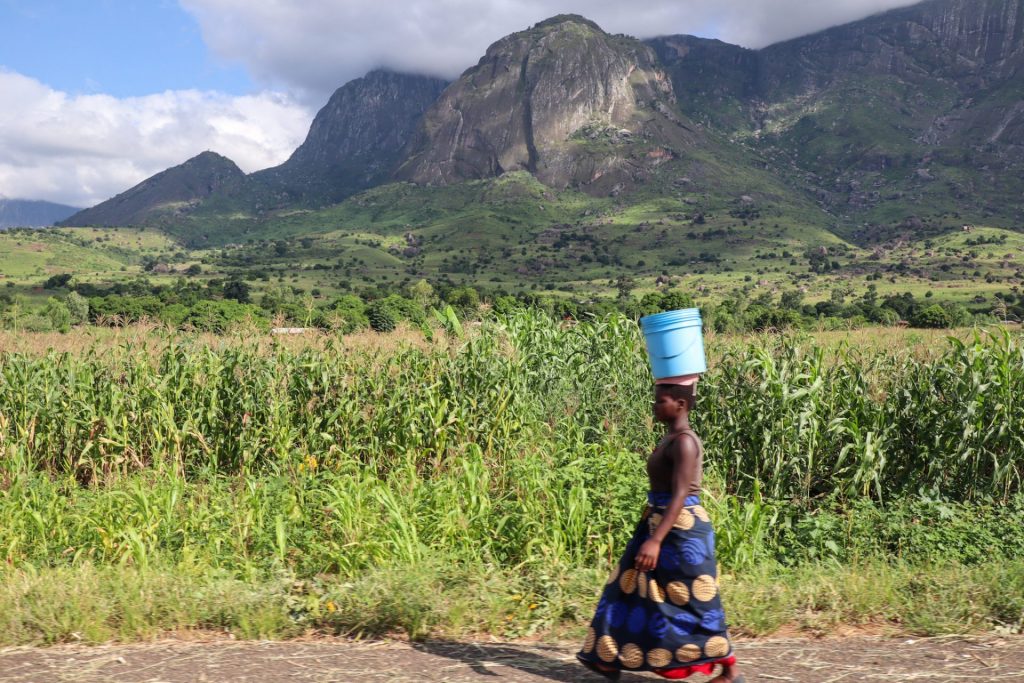Travel blog
Last article
BENIN AND TOGO: Pays Betammaribè and Pays Tamberma, a tribal group with unique constructions
If there is an ethnic group that stands out in the north of Benin and Togo this way, it is, without a doubt, the people known as the Batammariba, the Tammari or the Otomari, a village of farmers who have maintained until today, many of their traditions and customs such as the architecture of their houses that look like miniature castles. In fact, these people took refuge in the mountainous region of Atakora migrating from the north, from Burkina Faso, and defending themselves from clashes with other tribal groups such as the Bariba. This mountainous area of difficult access was an ideal place to protect oneself from his enemies and also from the slaveholders of the Kingdom of Dahomey. In addition, they built small clay castles, which are typical constructions of this town and for which they are currently known. It is a group that did not have much external influence and has been...
MOST POPULAR ARTICLES
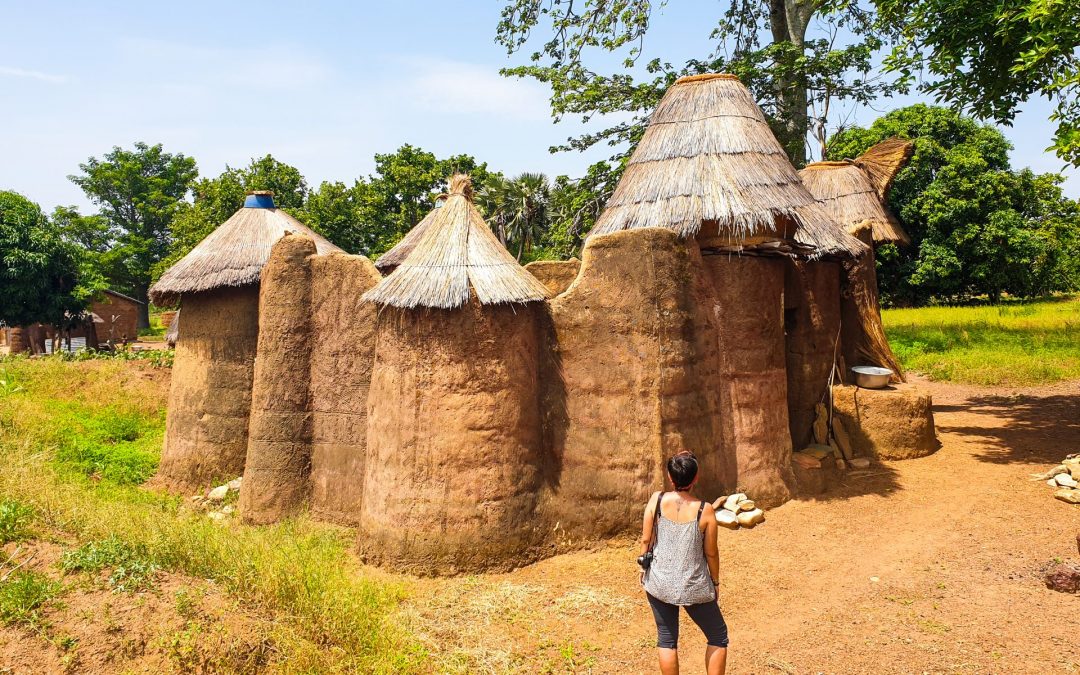
BENIN AND TOGO: Pays Betammaribè and Pays Tamberma, a tribal group with unique constructions
If there is an ethnic group that stands out in the north of Benin and Togo...
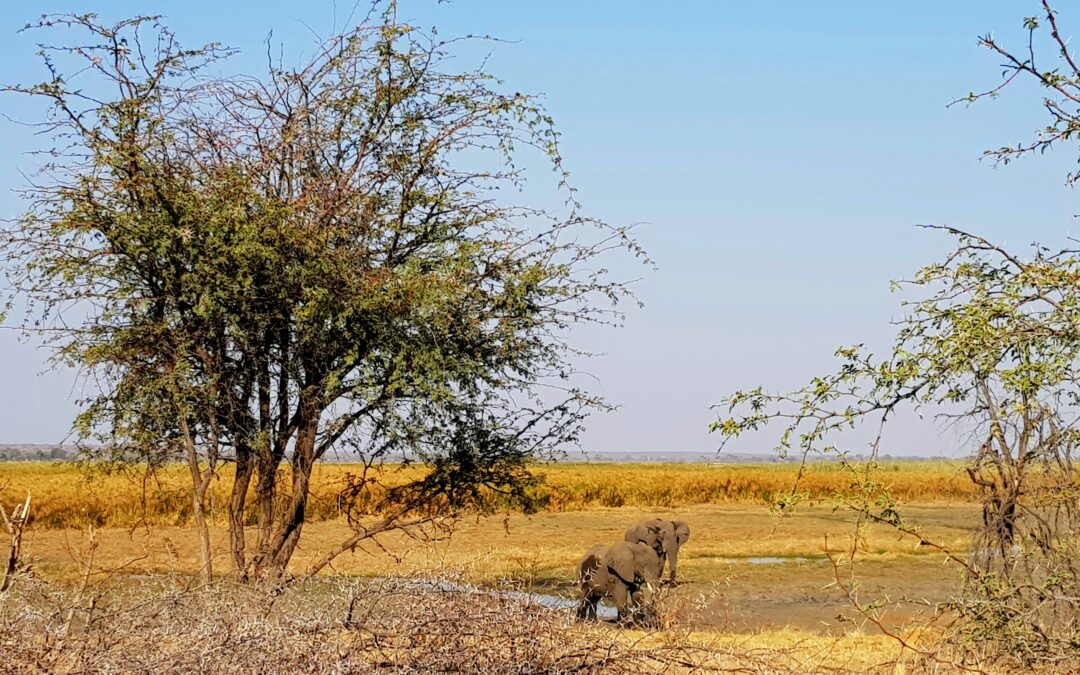
BOTSWANA: The elephants
The first time you meet an elephant on one of your trips to Africa does not...
ALL ARTICLES
BENIN AND TOGO: Pays Betammaribè and Pays Tamberma, a tribal group with unique constructions
If there is an ethnic group that stands out in the north of Benin and Togo this way, it is, without a doubt, the people known as the Batammariba, the Tammari or the Otomari, a village of farmers who have maintained until today, many of their traditions and customs...
BENIN: Practical information and its essentials
Capital: Porto-Novo Area: 114.763 km2 Inhabitants: 12.996.895 inhabitants (2021) Population density: 113,25 inhabitants per km2. Languages: Benin is a country with great linguistic diversity. We can find up to 55 languages, although the official language of...
BENIN: How to organize a travel around the country?
Benin is a country located on the coast of Guinea that has around 12 million inhabitants. It is an elongated country with an area of 114,763 km2. A former French colony, today this small country stands out for its great cultural diversity and for having voodoo as...
BENIN: Ouidah, the last stop for the slaves before crossing the door of no return
Ouidah is one of the cities with the most history in Benin. In a relaxed and peaceful atmosphere, there we find a great cultural history that explores everything related to voodoo and the history of the first inhabitants of this country. However, this city also has...
BENIN: Cotonou, the city of the Zems
Cotonou is the largest and most important city in Benin. It is where we find the international airport, our first point of arrival in the city that will surely surprise you. Despite being the most populated city, it is not the official capital of Benin. This is...
BENIN: Pays Taneka, the town hidden between mountains
The Pays Taneka is one of the areas we liked the most from our trip to Benin. Located between the cities of Djougou and Natitingou, this ethnic group has lived as refugees in the mountains called Taneka for thousands of years in order to hide from attacks by other...
BENIN: Abomey, one of the most important historical cities in West Africa
The city known today as Abomey and located in south-central Benin was the capital of the ancient Kingdom of Dahomey, one of the most important kingdoms in West African history. This kingdom was established in these lands in 1625 by the Fon tribe. Quickly, it became...
BENIN: Ganvié, the African Venice
Ganvié is one of the most iconic towns in Benin. The reason? Well, it is a floating town built on the waters of Lake Nokoué, a short distance from Cotonou. They say that Ganvié is the African Venice, although we dissertate and we could say that Venice is the...
BENIN: Porto Novo, the capital with Brazilian airs of the country
Porto Novo is the current capital of Benin. Despite having only 250,000 inhabitants and a much more relaxed atmosphere than Cotonou, it has always had an important weight in history. Today, it is a city that houses the main museums of the country such as the...
BENIN: Grand Popo, the paradisiacal beaches of Benin
Grand Popo is a tourist region that is approximately two hours from Cotonou and is just below Togo. It is an area that stands out for its beaches, and is located on an arm of land between the Atlantic Ocean and the marshes of the Mono River. A region that will...
BENIN: The ethnic diversity of the tribal groups found in the center of the country. The Holi, the Geledé dance, the Fulani and Dassa
Benin is a country noted for the presence of different tribal groups. During its history, probably the one that stood out the most was the kingdom of Dahomey (formed in the current Abomey and where we find the different royal palaces. If you want to know more, you...
LESOTHO: Curiosities
Lesotho is also known as "the kingdom of the sky". Do you know why? Lesotho is a paradise. It is a mountainous country that is located more than 1,000 meters high. In fact, it is the country that has the lowest level at the highest altitude in the world. Its...
LESOTHO: Practical information and its essentials
Capital: Maseru Area: 30.355 km2 Inhabitants: 2.125.268 inhabitants (2019) Population density: 70,01 inhabitants per km2. Languages: The official languages of the country are Sesotho and English. In fact, Lesotho is one of the few African countries where only...
LESOTHO: The Mokhotlong region and our two-day horseback ride through the Lesotho Highlands
Mokhotlong is a city and district at the same time, in the northeastern part of the country. It's the first major city with an airport that you'll find if you pass through the Sani Pass, an all-terrain vehicle-only mountain pass that challenges all road and 4WD...
LESOTHO: Malealea, the Makhomalong valley and the gates of paradise
In the west of the country, there is a small paradise surrounded by mountains: the Makhomalong valley. This green valley surrounded by the Maloti Mountains is well sheltered from the neighboring and bustling Maseru, some 80 km away. Here the sound of horns, the...
LESOTHO: From the Highlands to the Lowlands of Lesotho: a route through the north of the country
One of the most beautiful routes in the country in terms of landscape, is the Northern route that follows the country's A1 road. This route passes through some of the highest points in the country, known as the Highlands, and then descends into the lowlands known...
LESOTHO: Semonkong and Maletsunyane Falls
Semonkong, or place of smoke, is a village located in the south-west of the country, in the Maseru region. The name "place of smoke" is due to the nearby Maletsunyane Falls which are the highest single jump falls in southern Africa at 192 meters and which create a...
LESOTHO: Thaba Bosiu, the most important mountain of the country
Thaba Bosiu is one of the most special places to visit during your Lesotho tour. It is considered the birthplace of the Basotho nation, and the country's major historical events have taken place there, and you can also find the country's major kings buried there....
LESOTHO: Sani Pass
One of the most iconic ways to enter or leave Lesotho is through the Sani Pass. The Sani Pass is a mountain pass suitable only for off-road vehicles that is a challenge for all those who love road routes and that connects South Africa with the Kingdom of Lesotho....
LESOTHO: Katse Dam
The Katse Dam is an engineering spectacle, a human attempt to control the water, which in this area, is plentiful. By visiting this architectural spectacle you can understand, without much knowledge, how colossal this work is and the advantages and disadvantages...
LESOTHO: Ts’ehlanyane NP
Ts’ehlanyane National Park is the largest national park in Lesotho. In fact, it is one of the two national parks that we find in the country, along with the more inaccessible Sehlabathebe, which is located south of the Sani Pass. The Ts'ehlanyane is part of the...
LESOTHO: Ha Kome caves
The Ha Kome Caves are one of the most curious places you can visit in Lesotho and have been classified as a World Heritage Site. These caves consist of five cave houses made of mud built inside a large cavern. Kome Caves are also known as Komaisa Caves or "the...
MALAWI: Curiosities
Malawi and its people are known as the "warm heart of Africa". Do you know why? Malawi is known internationally as "the warm heart of Africa". The reason? His people. When you travel this country, you will be surprised by the kindness and hospitality of its...
MALAWI: Practical information and its essentials
Capital: Lilongwe Area: 118.484 km2 Inhabitants: 18.628.747 inhabitants (2019) Population density: 157,23 inhabitants per km2. Languages: The official language of Malawi is English, as this country was a British colony. Chichewa is the principal language...
MALAWI: Likoma Island
Likoma Island is one of the places we liked the most during our trip to Malawi. It is a small island located in the center of Lake Malawi, very few kilometers from the Mozambican coast of the lake. In fact, together with the island of Chizumulu, these two small...
MALAWI: Cape Maclear and Monkey Bay, the lake Malawi
Cape Maclear (also known as Chembe) and Monkey Bay are two villages located south of Lake Malawi. They are one of the most popular destinations on Lake Malawi, because there is the national park and a very authentic African and local atmosphere. Located a...
MALAWI: Liwonde NP
Liwonde NP is one of the few national parks in Malawi where you will find wild animals. With an area of 550 square kilometers, it is a relatively small reserve located 6 kilometers from the town of Liwonde and about 160 kilometers from Blantyre, the country's...
MALAWI: Livingstonia
Livingstonia is a village located in the north of Malawi and which was one of the most important settlements in the history of the country, where lived the Scottish Anglican missionaries who sought refuge in the late 19th century from the malaria they suffered in...
MALAWI: Zomba
In the south of Malawi, between Blantyre and Liwonde, we find the city of Zomba. This was the capital of Nyasalandia, the former British colony, and also of Malawi during its first ten years of independence (from 1964 to 1974). Later, the capital moved to Lilongwe,...
MALAWI: Mount Mulanje
The Mulanje area is where we find the highest peaks in Malawi. Located between Blantyre and Zomba, and very close to the border with Mozambique, we find this massif that majestically imposes itself in the south of the country. A rural area, which stands out for its...
